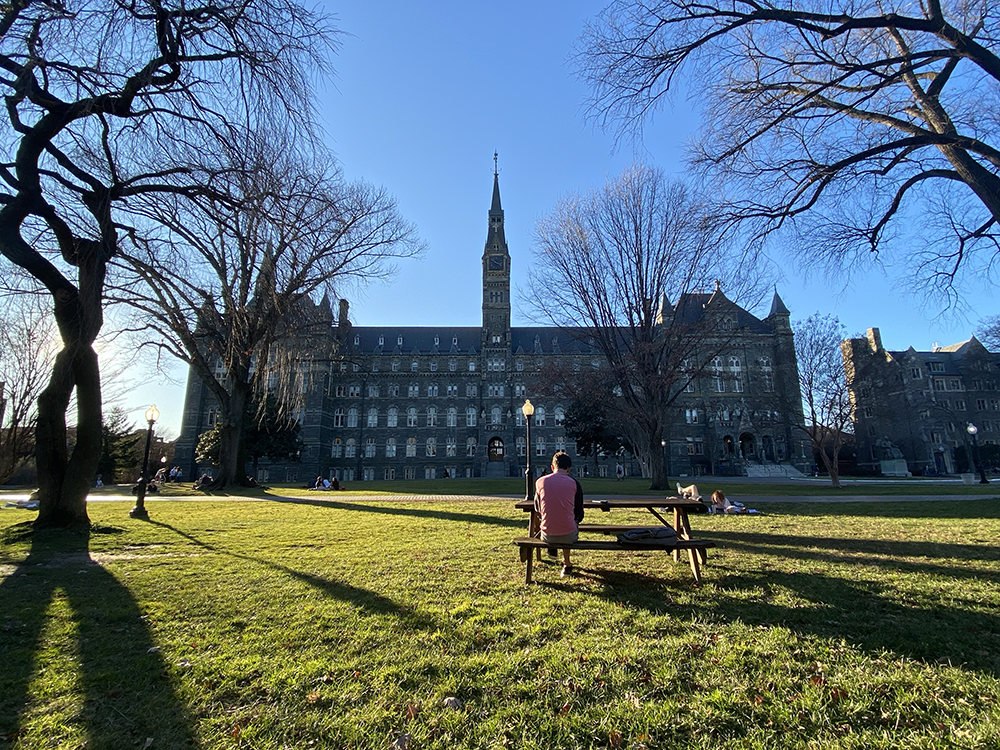The race, gender and ethnicity of residential students and community members will be excluded from the 2020 census as Georgetown University switches to a new online census reporting system, according to a university official.
The university will be able to report 100% of students living on campus through an online data collection system in April 2020. The Family Education Rights and Privacy Act, however, restricts the university from reporting the race, ethnicity or gender of students, according to a university official.

Georgetown will compile census data for residential students and community members using a new Electronic Response Data Transfer, or eResponse, method for the first time this year. Administrators will input census data online on behalf of residential students and community members through the new system, according to a university official.
The U.S. Census Bureau will not directly contact students in university-owned housing, which the bureau considers group quarters, the same category as jails and senior living homes, according to a 2020 census fact sheet co-authored by Cara Brumfield. Brumfield serves as a senior policy analyst at the Economic Security and Opportunity Initiative at the Georgetown University Law Center’s Center on Poverty and Inequality.
The USCB will instead communicate with university representatives, according to the fact sheet.
When universities report census data on residential students, representatives have several options for how they count those students, according to the USCB. Universities can choose to report census data by allowing a census taker to drop off paper questionnaires for students to fill out. They can also choose to give a census taker permission to knock on doors to conduct the census or elect to compile data online using a secure portal, according to the USCB.
In previous years, the university participated in a program in which students filled out a census form and delivered it to their residential assistants. Under this system, used by Georgetown in the 2010 census, roommates filled out forms together before turning them in to their RAs, according to a university official.
Out of concerns that the previous system could make students feel uncomfortable, the university switched to an eResponse method for group quarters for the 2020 census, rather than having students self-report information, according to a university official.
Students also have the opportunity to request that additional directory information, such as home addresses, telephone numbers, and date and place of birth, be withheld from student directory information, according to a Jan. 23 universitywide email from Associate Vice President and University Registrar Annamarie Bianco.
While students can withhold the release of directory information every academic year, students can also restrict the university from sharing their information with the USCB, according to a university official.
Students can opt-in to filling out the census form themselves and include answers to questions about characteristics of their identity, according to Amy O’Hara, director of the Georgetown Federal Statistical Research Data Center.
“There is also an option for students to fill out individual forms, which would enable them to report their characteristics like race, Hispanic origin, and gender,” O’Hara wrote in an email to The Hoya. “These fields have always been restricted by FERPA, nothing changed this year in terms of the law or regulations.”
Data collected from the census is crucial to developments for Georgetown’s surrounding neighborhood, according to O’Hara.
“Census data is critically important for understanding Georgetown’s local community, potentially involving the availability and use of rental housing, of transportation planning (bike share, ride share, parking, bus routes, shuttles), and the data are important to investors and entrepreneurs who offer services to the Georgetown community,” O’Hara wrote.
Unlike residential students, the university will not complete an eResponse for students living off campus. These students will self-report their race or ethnicity and gender on 2020 census enumerations, according to a university official. The census will also contact those students directly.
The university has not sent instructions to students living on or off campus for the upcoming census set for April 2020.
Georgetown students, whether they live in official campus housing or in off-campus residences, need to know how their data will be reported, according to Natalia Lopez (SFS ’22), secretary of D.C. Affairs for GUSA’s D.C. and Federal Relations Committee.
“One of our major projects this semester is making sure that all students understand the importance of the census to not only the university but to our community as well,” Lopez wrote in an email to The Hoya. “We are working alongside the university with their advocacy efforts to make sure every student knows their responsibilities for the census, such as what forms they need to fill out if they are living off campus.”




















